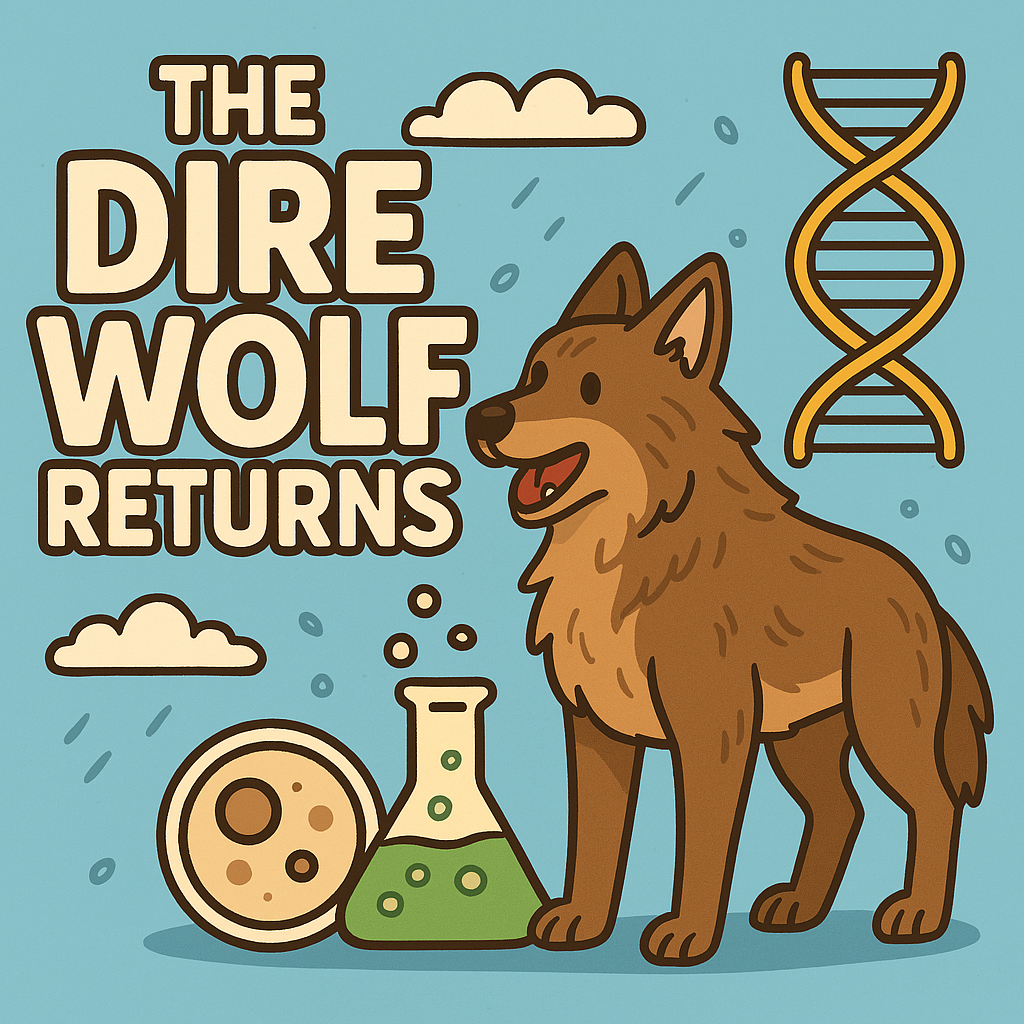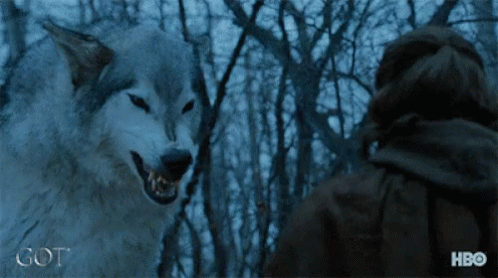🐺 The Dire Wolf Returns: Science, De-Extinction, and the Future of Conservation

Natural Sciences | The Varrock Street Journal
Welcome back Varrok Street Journal Readers, I hope you're ready for this one...
If you're anything like me, hearing that scientists have “brought back the dire wolf” instantly triggers images of Game of Thrones or prehistoric tundras. But this isn't fantasy—this is the reality of de-extinction science in 2025.
This week, we’re diving into one of the boldest biological experiments of our time. A team of scientists has successfully revived a creature thought to have gone extinct over 10,000 years ago: the dire wolf. We’ll explore how they did it, why they did it, what this means for science and conservation, and where the ethical lines are being debated.
🧬 What Exactly Is a Dire Wolf?
The dire wolf (Aenocyon dirus) was one of the most powerful predators of the Pleistocene epoch, roaming what is now North America alongside saber-toothed cats, mammoths, and giant ground sloths. Often confused with the modern gray wolf, the dire wolf was actually heavier, with a stronger jaw, and genetically quite different.
Dire wolves went extinct roughly 10,000 years ago, likely due to a combination of environmental change and competition with faster, more adaptable predators like the gray wolf.

⚗️ The Science of Revival: How Did They Do It?
The recent announcement by Colossal Biosciences, the same company working to revive the woolly mammoth, marks the first public instance of a functional dire wolf clone born in modern times. Here’s how it happened:
🦴 1. Ancient DNA Recovery
Researchers extracted DNA from dire wolf fossils—specifically a 13,000-year-old tooth and a 72,000-year-old skull. These were remarkably well-preserved, allowing for a surprisingly complete genome reconstruction.
🧬 2. Genome Editing
Using CRISPR-Cas9, scientists compared dire wolf genes to those of modern gray wolves and pinpointed approximately 20 gene clusters that defined their unique traits (e.g., muscle mass, jaw structure, fur density, and size).
🧪 3. Cellular Engineering
They then engineered these dire wolf gene edits into gray wolf cells. The edited DNA was inserted into enucleated canine egg cells to create embryos with dire wolf features.
🐶 4. Surrogate Mothers
Domestic dogs were used as surrogate mothers to gestate the embryos. In early 2025, three pups were born: Romulus, Remus, and Khaleesi—named for mythological and pop culture icons.
These pups are genetically unique, exhibiting phenotypic traits of dire wolves—marking the first living beings of their kind in over 10,000 years.
🌍 Why Are Scientists Doing This?
Reviving the dire wolf is part of a broader “de-extinction movement”, which has both biological and philosophical goals:
- Conservation Innovation: The techniques used can help protect critically endangered species by boosting genetic diversity or resurrecting extinct traits.
- Ecological Restoration: Some believe reintroducing extinct predators could help balance ecosystems, much like wolves did in Yellowstone.
- Scientific Discovery: Studying living dire wolf analogs can provide insight into evolution, disease resistance, and adaptation.
- Public Awareness: These high-profile projects get people talking about conservation, climate change, and biodiversity.
🧭 Why This Matters
At first glance, this might seem like science playing God—but it’s more nuanced. This project showcases the potential of biotechnology to not just preserve life but recreate it. It also raises big questions:
- Should we bring back what nature phased out?
- Can ecosystems handle the reintroduction of apex predators?
- Is the cost of revival worth the scientific payoff?
As Colossal Biosciences continues its mission to de-extinct the woolly mammoth, thylacine (Tasmanian tiger), and now the dire wolf, these conversations are only going to grow louder.
🧪 Spotlight on Future Applications
The methods used to bring back the dire wolf could revolutionize multiple fields:
- Conservation Genetics: Rescuing species like the black-footed ferret or northern white rhino using hybrid cloning.
- Disease Research: Understanding extinct immunity genes to fight modern viruses and zoonotic diseases.
- Space Biology: Developing synthetic life for extreme environments by learning how DNA can be manipulated and preserved over millennia.
- Public Policy: Pushing the legal boundaries of biotechnology and ethical oversight in genetic experimentation.
Here is a video to check out more!
😲 Did You Know?
- Dire wolves were not direct ancestors of gray wolves—they’re a separate genus entirely.
- The name Aenocyon dirus means “terrible wolf”, and fossils have been found in over 100 sites across North America.
- Scientists believe dire wolves may have had stronger bite forces than modern big cats!
🧠 Reflection Questions
- Do you think de-extinction should be used for conservation or reserved for scientific study?
- What risks could arise from reintroducing an extinct predator into the modern world?
- How does this change the way we think about extinction—permanent or reversible?
📚 References (APA Format)
Ghosh, P. (2025, April 6). Scientists bring back dire wolf using gene editing and cloning. WIRED
Rocha, A. (2025, April 7). Dire wolf revived from extinction in U.S. lab. New York Post
The Times. (2025, April 6). The dire wolf has returned: Genetic resurrection sparks conservation debates. The Times
Molteni, M. (2025, April 8). The science behind bringing back the dire wolf. TIME
👋 Final Thoughts
Whether you're thrilled, cautious, or skeptical, one thing’s clear: the line between extinction and existence just got a lot blurrier. As we look to a future shaped by biotechnology, the dire wolf may just be the beginning of an era where science gives nature a second chance.
📲 Stay curious, stay connected:
- Instagram: @thevarrockstreetjournal
- TikTok: @varrock.street.jo
